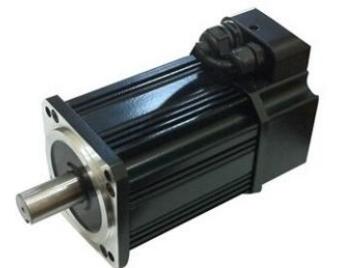
A servo system is not just a servo motor. It is a closed-loop motion system control engineering network and contains a controller, driver, electrical instrument and feedback device, usually equipped with an optical or magnetic encoder.
Servo systems can synchronize machinery using permanent magnets (PM) technology, with brushed or brushless PM motors, or build asynchronous mechanical systems on an AC induction motor. So what are the torque control problems of servo motors? Let me analyze it systematically below!
1. Torque control is the control of motor current. The size of the motor current determines the size of the load torque. It is controlled by the motor itself when the motor drives the load.
2. Speed control is the control of the frequency and voltage of the motor power supply, which can be controlled manually through the frequency converter.
3. When the speed is faster and the load with greater torque, such as water pump and fan load, as the speed increases, the torque increases and the current automatically increases.
4. When the speed is faster and the torque is smaller, the load torque decreases as the speed increases, and the current of the servo motor will also automatically decrease.
5. What everyone needs to pay special attention to here is: when the load torque is large, the current of the servo motor increases, which increases the motor torque and drives the load to move. This process is the instinct of the motor and cannot be controlled by others. No one can control it!
6. In addition, it should be noted that when the load torque becomes smaller, the current of the motor will also decrease, thereby reducing the motor torque and driving the load to move. This process is also the instinct of the motor and is not controlled by humans.
7. When the current closed-loop control of the servo motor is carried out, the load torque increases and the current cannot exceed the given value. At this time, the frequency and voltage of the motor will automatically decrease, and the speed will decrease. At this time, you need to reduce the load torque.
8. When the motor's current is under closed-loop control, its load torque is small and the current cannot be lower than the given value. The frequency and voltage of the motor will automatically increase. If you want to increase the load speed, you must increase the load torque of the motor.
9. If it encounters a load with increased deceleration torque, the result of current closed-loop control will definitely be reverse parking.
10. If a load with reduced speed increasing torque is encountered, the result of the current closed-loop control will definitely be to synchronize the servo motor or generate electricity.



















